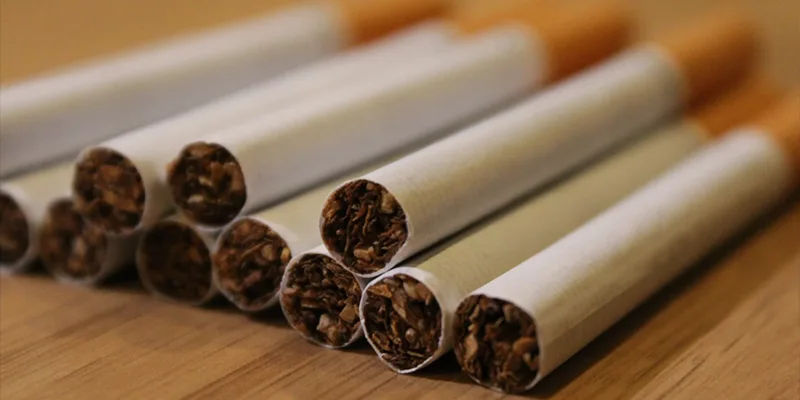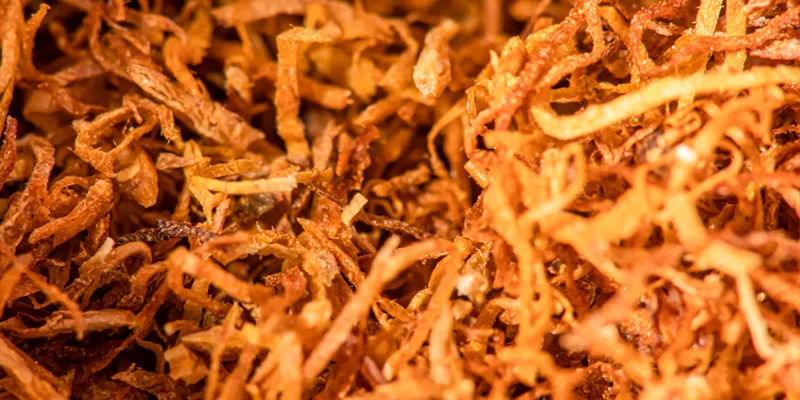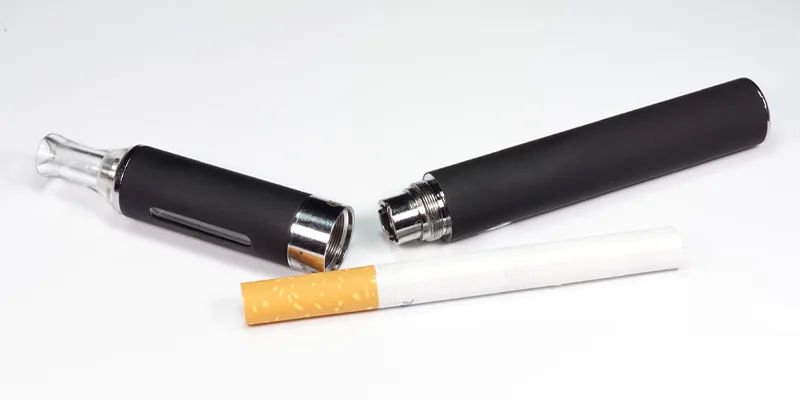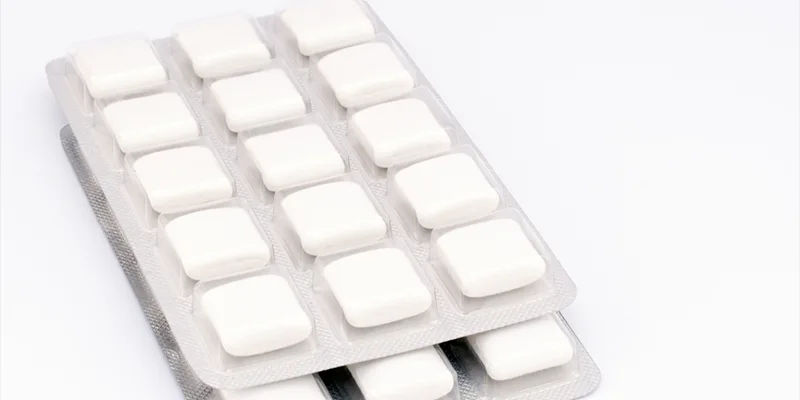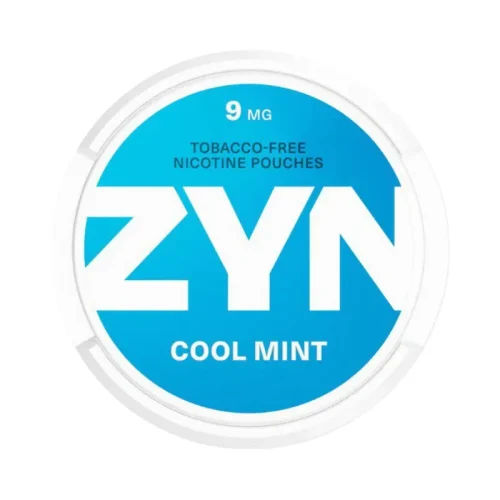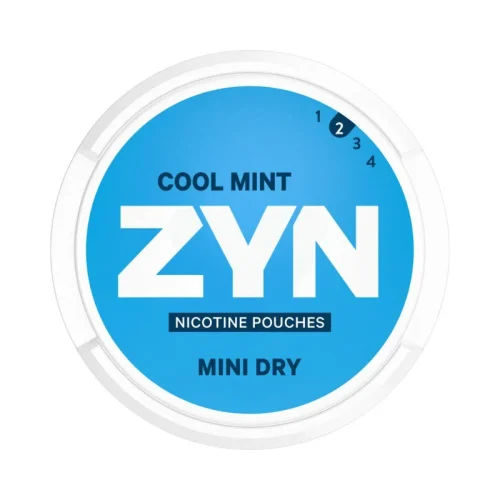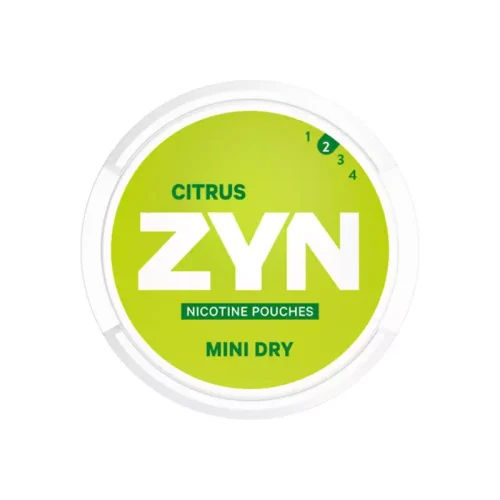Nicotine is a plant alkaloid in the nightshade family of plants. An alkaloid is a member of an enormous group of substances found in plants and some in fungi that have pronounced physical effects on humans (for example morphine, atropine, caffeine and so on). Nightshade plants contain different types of alkaloid compounds that cause physiological changes in the body (for example tomatoes, peppers and so on). Nicotine is the main psychoactive ingredient in tobacco but can also be produced artificially.
About 12.5% (30.8 million) of adults in America smoked cigarettes according to statistics in 2020. Nicotine dependence was noted by 8,5% (23.6 million) people who were older than 12 years. Research stated that then the age group 18-20 is most likely to become addicted when starting to smoke regularly. Nauru and Kiribati have the highest percentage of smokers in the world – 52% of the population. It is shown that nicotine is likely to become addictive just after a few days of usage based on research. 88 billion dollars were spent on advertising tobacco and smokeless tobacco products in America (2019), that is nearly equal to spending 1 million dollars in an hour on advertising alone.
Nicotine is a stimulating drug that speeds up the signals from the brain to the body, it increases the heart rate and the amount of oxygen that the heart consumes. Nicotine is also a relaxing drug that causes the feeling of well-being. Nicotine is anxiolytic that means it reduces anxiety, which is often caused by stress. Most anxiolytics block the activities of certain chemicals in the nervous system. When using nicotine repeatedly results can be:
- positive reinforcement
- negative reinforcement
- reduction of body weight
- enhancement of performance
- protection against: Parkinson’s, Tourette’s and Alzheimer’s disease
- defense against ulcerative colitis and sleep apnea
- increase in blood pressure, flow of blood to the heart, heart rate and a narrowing of the arteries.
What is nicotine?
Nicotine is an addictive stimulus drug that speeds up the central nervous system (CNS),messages that travel from the brain to the body and the other way. Nicotine is the main psychoactive component in tobacco products. Nicotine has a slight fishy scent when heated up. Nicotine is a colorless to light yellow or brown liquid. Nicotine is photosensitive and will gradually turn brown when exposed to light or air, products that contain nicotine should be kept away from direct sunlight. Nicotine is a plant alkaloid that belongs to the nightshade family of plants. An alkaloid is a type of chemical that contains at least one nitrogen atom, it also includes some related compounds with neutral or even weakly acidic properties, has a low molecular weight and brings physical changes on humans. It belongs to the alkaloid group due to nicotine´s stimulus impact and molecular structure . Nightshade plants cause physiological changes in the body (for example increase heart rate).
What Type of Drug is Nicotine?
Nicotine is a stimulant and anxiolytic (antipanic or anti-anxiety agent) drug. Nicotine is a CNS (central nervous system) stimulant and has both stimulatory and depressant actions on autonomic ganglia. It means that nicotine makes the person more alert and relieves anxiety at the same time. Nicotine produces a short-term surge of endorphins in the reward circuits of the brain that causes a slight, brief euphoria when administered. That surge is much shorter than the “high” associated with other drugs. Similarly, to other drugs of abuse, nicotine increases levels of the neurotransmitter dopamine in these reward circuits which reinforces the behavior of taking the drug. Nicotine is the type of drug that makes your brain feel good while consuming it and that makes you want to use it again, it is addictive. Nicotine is a short-lived drug so it can lead to a cycle of constant use to relive the pleasurable sensation, the feeling of “high”. Repeated usage changes your body’s sensitivity to dopamine and leads to changes in other brain circuits connected with learning, stress, and self-control. The more you use the nicotine the bigger the dosages will get for getting the same feeling as in the beginning, a person’s reaction to the same dosage of nicotine becomes gradually weaker. The lethal dose of nicotine to humans is 40-60 mg as stated by the EPA (Environmental Protection Agency) in 1998.
What is the Physical Structure of Nicotine Molecule?
Nicotine is a dinitrogen alkaloid, that means it contains two nitrogen molecules, that has two heterocycles, pyridine and pyrrolidine. Nicotine´s empirical formula is C10H14N2 and molar mass is 162.23 g/mol (for comparison the molar mass for table sugar is 342.3g/mol and for diamond it is 12.01 g/mol, the bigger the molar mass the bigger the viscosity, it means it is harder to process the material using conventional methods).
What are the Chemical Features of Nicotine?
| Chemical feature | Chemical feature´s value in Nicotine |
| Empirical formula | C₁₀H₁₄N₂ |
| Molecular Weight | 162.23 g/mol |
| Appearance | Colorless to yellow-brown oily liquid |
| Scent | Fish-like aroma when burning |
| Taste | Bitter (acrid), burning |
| Boiling point | 476.1 °F (247 °C) |
| Melting point | -110 °F (-79 °C) |
| Flash point (ignition temperature) | 214 °F (101 °C) |
| Solubility | Miscible (capable of being mixed) |
| Stability | Photosensitive and will gradually turn brown when exposed to light or air. Should be stored at a lower temperature than 86°F (30°C) |
| Corrosivity | Nicotine will attack some forms of plastics, rubber, and coatings. |
| pH | pH=10.2 |
| Chemical Classes | Biological agent => plant toxin |
How does Nicotine Work as a Receptor Agonist?
Nicotine works as a receptor agonist (activates certain receptors in the brain) by stimulating the CNS (central nervous system) which is then mediated through the release of several neurotransmitters, including acetylcholine, beta-endorphin, dopamine, norepinephrine, serotonin, and ACTH (stimulates adrenal glands to release cortisol). Nicotine works as a receptor agonist by encouraging the body to produce the so called “pleasure/feel-good hormones”.
Which Receptors are Affected by Nicotine?
Nicotine affects the nicotinic cholinergic receptors; they function within the central nervous system and at the neuromuscular junction. Nicotinic receptors got their name from their activating ligand(a substance that binds specifically and reversibly to another chemical entity to form a larger complex)- nicotine.
How much Dry Weight does Nicotine have?
Nicotine´s dry weight is about 0.6-3.0% of the weight of the tobacco, that is equal to 18-20 mg of nicotine in one gram of tobacco.
What Chemicals does Nicotine Release in the Brain?
Nicotine releases stimulating and anxiolytic (antipanic or anti-anxiety agent) chemicals in the brain. The chemicals that nicotine releases in the brain are dopamine, serotonin, norepinephrine, acetylcholine, gamma-aminobutyric acid, and glutamate. The cognitive effects of those chemicals released in the brain by the use of nicotine are: significant positive effects on fine motor, short-term episodic memory, and working memory performance, according to 2018 research paper by G. Valentine and M. Sofuglu. Also “alerting attention” (maintenance of an alert state) and “orienting attention” (directing attention to sensory events) were also positively affected.
What are the Harmful Effects of Nicotine?
The harmful effects of nicotine to different systems of the body are, according to the Tobacco Free Life (anti-tobacco organization in Santa Ana, Ca):
Central Nervous System
- Dizziness: a range of sensations such as feeling woozy, faint, unsteady or weak.
- Lightheadedness: feeling of dizziness, weakness or like you might faint.
- Abnormal sleep disturbances: sleeping too little or much, waking up in the middle of night, having trouble with falling asleep.
- Blood-flow risk: might reduce blood flow and because of that organs get less oxygen and nutrients.
- Headache: a discomfort or pain in the head area.
Read more about the health effects of nicotine.
Cardiovascular System
- Atherosclerosis: thickening or hardening of the arteries caused by a buildup of plaque in the inner lining of an artery.
- Aortic enlargement and dissection: aortic aneurysm and weakened wall of the aorta tears, causing blood to leak between the layers that make up the walls of your arteries.
- Increased clotting: blood gets too thick and blocks vessels and arteries that leads to consequences.
- Heart rate fluctuation: heart can beat too fast, slow or irregularly.
- Increased blood pressure: leads to heart attack, stroke and other health problems.
- Coronary artery disease: plaque buildup in the wall of the arteries that supply blood to the heart. That leads to blood clotting and arteries getting narrower.
- Tachycardia: a heart rate over 100 beats in a minute.
- Arrhythmia: a problem with the rhythm or rate of your heartbeat. The heart beats too quickly, too slowly, or with an irregular rhythm.
Respiratory System
- Shortness of breath: the feeling that your lungs do not get enough air.
- Chronic obstructive pulmonary disease: chronic inflammatory lung disease that causes obstructed airflow from the lungs.
- Bronchospasm: the muscles that line your bronchi (airways in your lungs) tighten. This results in coughing, wheezing, and other symptoms.
- Cancer: a disease in which some of the body’s cells grow uncontrollably and spread or invade other parts of the body.
Muscular System
- Spinal disc degeneration: the cushioning in your spine begins to wear away and cause pain.
- Joint pain: discomfort in a joint.
- Tremors: an involuntary quivering movement.
Gastrointestinal System
- Peptic ulcer: A break in the lining of the lower part of the esophagus, the stomach, or the upper part of the small intestine. It causes pain and without cure leads to more serious health problems.
- Diarrhea: feces are discharged from the bowels frequently and in a liquid form.
- Nausea: feeling of sickness with an inclination to vomit.
- Dry mouth: when the body is not able to make enough saliva, it causes discomfort.
- Heartburn: when stomach acid backs up into the tube that carries food from your mouth to your stomach, that causes discomfort and in some cases extreme pain.
- Dyspepsia: bad digestion. An episodic or recurrent pain or discomfort arising from the proximal gastrointestinal tract related to eating
- Cancer: a disease in which some of the body’s cells grow abnormally and spread or invade other parts of the body.
What are the Nicotine Complications?
The complications of nicotine are:
- Psychoactive effects (influences the brain work and causes changes in mood, awareness, thoughts, feelings, or behavior)
- Physical dependence (addiction)
- Compulsive use (addiction)
- Drug- reinforced behavior (drugs of abuse serve as biological rewards by activating the reinforcement system, using the drug to get the “high”)
- Quick relapse (hard to quit the usage)
- Tolerance (need to use higher doses of nicotine to get the “high”)
How is Nicotine being Used?
Nicotine is commonly used as a recreational drug. Nicotine is mostly smoked in cigarettes but it is likely to be chewed or consumed by placing it in the mouth and keeping it there for some time so the nicotine can be absorbed into the body through the lining of the mouth. Nicotine was used in the United States as an insecticide (toxic substance used to kill insects) and fumigant (substance used for pest control), it is no longer produced or used in this country for this purpose as stated by the NIOSH (The National Institute for Occupational Safety and Health).
What are the Medical Uses of Nicotine?
The medical use of nicotine is to treat addiction to smoking cigarettes. Since smoking tobacco is more harmful than nicotine than it is medically recommended to help quit smoking. Some other medical uses of nicotine are to help with Tourette’s Syndrome as stated in the medical study (2005) by Novak, K. There has been much research about using nicotine in different therapies to relieve or cure illnesses. For example, ulcerative colitis (inflammatory bowel disease) is an illness of nonsmokers and irregular smoking often resulted in improvement in their symptoms according to research carried out by McGrath, J., McDonald, J. , & MacDonald, J. (2004). Another successful medical use of nicotine has been the treatment of akathisia (movement disorder, hard to stand still) with nicotine patches, it reduced significantly akathisia compared to the days when patients were not wearing nicotine patches as stated by dr. Anfang, M and dr. Pope, H. in Psychopharmacology (1997).
What are the Pesticide uses of Nicotine?
Nicotine is used as a pesticide, more precisely as an insecticide because it is lethal to a lot of insects and fungal species. For example, it is commonly used as a pesticide for Colorado potato beetles. One of the new fields in pesticide uses of nicotine is in organic farming- due to tobacco´s natural content of nicotine it can be used as an organic pesticide to support organic farming.
How is Nicotine Used as a Recreational Drug?
Nicotine is used as a recreational drug in different ways: smoking, inhaling, through the lining of the mouth and through the nose. The most common way of using nicotine as a recreational drug is through smoking a cigarette or inhaling using a vaping device. Using nicotine as a recreational drug is most convenient as a nicotine pouch that you place into your mouth since it is allowed everywhere, smoking cigarettes is forbidden in a lot of places.
What Regulations Apply to Nicotine Consumption?
There are a lot of different regulations that apply to nicotine consumption. Most regulations that apply to nicotine consumption are to do with the age limit, advertisements and places where you are allowed to smoke. The most influential regulations that apply to nicotine consumption in the U.S. are:
- Consolidated Appropriations Act of 2020, Amending the Federal Food, Drug, and Cosmetic Act and the Public Health Service Act – prohibits the sale of tobacco products to any person under the age of 21.
- Family Smoking Prevention and Tobacco Control Act of 2009 – grants the Food and Drug Administration (FDA) the authority to regulate tobacco products.
- Pro-Children Act of 1994 – Requires all federally funded children’s services to become smoke-free.
- Synar Amendment to the Alcohol, Drug Abuse, and Mental Health Administration (ADAMHA) Reorganization Act of 1992 – Requires all states to adopt and enforce restrictions on tobacco sales and distribution to minors to be eligible to receive block grant funding to address substance abuse
- Comprehensive Smokeless Tobacco Health Education Act of 1986 – Institutes three rotating health warning labels on smokeless tobacco packages and advertisements (this product may cause mouth cancer; this product may cause gum disease and tooth loss; this product is not a safe alternative to cigarettes.
- Comprehensive Smoking Education Act of 1984 – Requires four rotating health warning labels (all listed as Surgeon General’s Warnings) on cigarette packages and advertisements (smoking causes lung cancer, heart disease and may complicate pregnancy; quitting smoking now greatly reduces serious risks to your health; smoking by pregnant women may result in fetal injury, premature birth, and low birth weight; cigarette smoke contains carbon monoxide). Creates a Federal Interagency Committee on Smoking and Health. Creates a Federal Interagency Committee on Smoking and Health.
- Creates a Federal Interagency Committee on Smoking and Health – Required package warning label – ” Caution: Cigarette Smoking May Be Hazardous to Your Health” .
What are the Statistics on Nicotine Use?
Statistics on nicotine use are:
- In 2022 there were 1.3 billion nicotine users worldwide – 1.1 billion smokers with additional 200 million more who used other tobacco products.
- Smoking has declined in the United States from 20.9% (nearly 21 of every 100 adults) in 2005 to 12.5% (nearly 13 of every 100 adults) in 2020 .
- According to the 2021 National Survey on Drug Use and Health in the U.S 8.5% (or about 23.6 million people) had nicotine dependence in the past 30 days (people aged 12 or older in 2020).
- In Global Trends in Nicotine it was estimated that in 2020 nicotine ecosystem global retail sales totaled approximately 853 billion dollars (U.S).
- Six largest tobacco companies generated 86.3% of cigarette retail sales globally (2020). China National Tobacco Corporation is the largest cigarette producer at
48.0%, followed by the five publicly traded tobacco companies: British American Tobacco Plc, 12.3%; Philip Morris International Inc, 12.3%; Japan Tobacco Inc, 8.1%;
Imperial Brands Plc, 3.5%; and Altria Group Inc, 2.1%.
Which Products Include Nicotine?
| Product | Combined risk score (0-100) | Harm Minimization spectrum |
|---|---|---|
| Cigarettes | 100 | Extreme Toxic (High-Risk) |
| Fine Cut Tobacco | 99.95 | Extreme Toxic (High-Risk) |
| Cigarillos | 84.18 | Extreme Toxic (High-Risk) |
| Pipe Tobacco | 75.72 | Extreme Toxic (High-Risk) |
| Shisha | 54.95 | Extreme Toxic (High-Risk) |
| Cigars | 41.10 | Extreme Toxic (High-Risk) |
| Moist Snuff | 15.10 | Extreme Toxic (High-Risk) |
| Chewing Tobacco | 11.18 | Extreme Toxic (High-Risk) |
| Heated Tobacco | 3.38 | Much Less Harm (Reduced-Risk) |
| Snus | 3.18 | Much Less Harm (Reduced-Risk) |
| Cartridges & E-liquids | 0.24 | Much Less Harm (Reduced-Risk) |
| Non-Tobacco Pouches | 0.22 | Much Less Harm (Reduced-Risk) |
| NRTs | 0.15 | Much Less Harm (Reduced-Risk) |
- Cigarettes
Definition: A cigarette is a roll of tobacco wrapped in paper or in a substance that does not contain tobacco.
Definition of usage: Light your cigarette by putting the light directly against the cigarette. Put the lit cigarette up to your lips, then suck the smoke gently with a long steady intake into your lungs, hold the smoke there for a second, then inhale normally, through your mouth, drawing air into your lungs.
Usage statistics: In 2020, 12.5% of U.S. adults (an estimated 33 million people) were currently smoking cigarettes: 14.1% of men, 11% of women. In 2020 cigarette smoking was the highest among people aged 25–44 years and 45–64 years, the lowest among people aged 18-24 years.
Differences: Cigarettes have different strengths and flavors.
Appearance/how they look: A cigarette looks like a tube-shaped, mostly white tobacco product that is made of finely cut, cured tobacco leaves wrapped in thin paper.
Why is it preferred: Cigarettes are preferred because you can easily buy them anywhere (shops, bars, cafes) and everyone has knowledge of the product.
- Cigars
Definition: A cigar is defined as a roll of tobacco wrapped in leaf tobacco or in a substance that contains tobacco.
Definition of usage: Before lighting up the cigar, make sure that it is properly cut to ensure that it smokes properly. The cut must be smaller because you can always cut more if necessary. Using the chosen cutter, remove the cap. The best thing to keep in mind when doing so is that you want to cut the cigar’s rounded end, make sure not to cut far enough down that the end will have parallel sides. If you cut too far, the wrapper leaf may come undone and leave you with a large mess of tobacco. Once you have properly cut the cap off of your cigar, you are ready to light up. Holding your lighter just far enough from the cigar that the flame does not reach it, slowly toast the end of your cigar while turning the cigar round. Puff slowly and enjoy the flavor. Let the smoke sit in your mouth for a few seconds and then slowly release it.
Usage statistics: In 2020, 3.5% of U.S. adults (estimated 9 million people) were currently smoking cigars: 6.3% of men, 0.8 of women.
Differences: Cigars have different sizes (large and small cigar, cigarillo), strengths and flavors.
Appearance/how they look: A cigar looks like a tube-shaped, brown tobacco product that is made of finely cut, cured tobacco leaves wrapped in leaf tobacco or in a substance that contains tobacco.
Why is it preferred: Little cigars are preferred to cigarettes since they can be cheaper (taxed differently) Large cigars are preferred mostly due to their more natural taste and the appearance you have while smoking them, they have their own marketing niche.
- Dip
Definition: Dip or by other name dipping tobacco is a type of finely ground or shredded, moistened smokeless tobacco product.
Definition of usage: Dip is used by placing it in your mouth and sucking (dipping) the tobacco in your mouth and spitting out the tobacco juices that build up.
Usage statistics: Dip and other smokeless tobacco products were being used by more than 2 in every 100 (2.3%) adults, this represents 5.7 million adults (in the U.S.).
Differences: Dips have different flavors and strengths.
Appearance/how they look: Dipping tobacco is a type of finely ground or shredded, moistened smokeless tobacco product that comes in different shades of brown.
Why is it preferred: Dipping is preferred because it can be done almost anywhere without any limitations.
- Snuff
Definition: A snuff is a type of smokeless tobacco that is made of finely ground or shredded tobacco leaves, it is in moist or dry form.
Definition of usage: Moist snuff tobacco is used by placing it in the mouth, usually between the cheek and gum or behind the upper or lower lip. Dry snuff tobacco is used by inhaling it through the nose.
Usage statistics: Snuff and other smokeless tobacco products were being used by more than 2 in every 100 (2.3%) adults, this represents 5.7 million adults (in the U.S.).
Differences: Snuffs can come in different forms: moist and dry. Snuffs can have different strengths and flavors.
Appearance/how they look: Snuff consists of finely ground or shredded tobacco leaves and is moist or dry but the color is some shade of brown.
Why is it preferred: Snuff is preferred because it can be done almost anywhere without any limitations.
- Snus
Definition: Snus is a type of tobacco snuff consumed in the form of a moist powder which is placed under the upper lip, without chewing, for extended periods of time
Definition of usage: Snus is placed under the upper lip and left there for extended time. After usage you remove the snus and dispose of it in the trash bin.
Usage statistics: Snus and other smokeless tobacco products were being used by more than 2 in every 100 (2.3%) adults, this represents 5.7 million adults (in the U.S.).
Differences: There is loose snus and packaged snus, they both come in different strengths and flavors.
Appearance/how they look: Snus can have a different appearance depending if it is loose or packaged. Loose Snus looks brown and moist, it is also quite similar to chewing tobacco. Packaged snus can be in small white or brownish packages depending on the production company.
Why is it preferred: Snus is preferred because it can be done almost anywhere without any limitations.
Read more about Snus.
- Nicotine Pouches
Definition: Nicotine pouches are white pouches containing nicotine and other ingredients.
Definition of usage: To use a nicotine pouch you place the pouch between the upper lip and gum, and leave it there while the nicotine and taste is being released. After finishing the usage of nicotine pouch you dispose of it in the trash bin.
Usage statistics: Nicotine pouches and other smokeless tobacco products were being used by more than 2 in every 100 (2.3%) adults, this represents 5.7 million adults (in the U.S.).
Differences: Nicotine pouches can have different strengths and flavors.
Appearance/how they look: Nicotine pouches look like tiny tea bags, that are sealed and completely white.
Why is it preferred: Nicotine pouches are preferred because they are less harmful than other nicotine products that contain tobacco also you can use them practically everywhere.
Read more about nicotine pouches.
- Chewing Tobacco
Definition: A chewing tobacco is a type of smokeless tobacco made from cured tobacco leaves.
Definition of usage: Chewing tobacco is used in two ways: by chewing it or by placing it between the cheek and lower gum to draw out its flavor.
Usage statistics: Chewing tobacco and other smokeless tobacco products were being used by more than 2 in every 100 (2.3%) adults, this represents 5.7 million adults (in the U.S.).
Differences: Chewing tobacco comes in different shapes, strengths and flavors.
Appearance/how they look: Chewing tobacco is brownish bigger pieces that dip, but it can come in different shapes: brick-like block, loose or twisted.
Why is it preferred: Chewing tobacco is preferred because unlike cigarettes you can use that practically everywhere.
- Hookah Tobacco
Definition: Hookah tobacco is a type of combustible tobacco that is used in hookah (waterpipe).
Definition of usage: Hookah tobacco is used by placing it on the hookah (waterpipe) and then smoking it through it.
Usage statistics: The hookah was used by 1 in every 8 (12.3%) of young adults (18-30) to smoke hookah tobacco in 2017 (in the U.S). Hookah tobacco is especially popular among college students with the users´ volume 20-40% in 2011(in the U.S.).
Differences: Hookah tobacco comes in different flavors and strengths.
Appearance/how they look: Hookah tobacco looks like a brownish, moist mix of dried-up plants.
Why is it preferred: It is preferred because of its social part in gatherings, it can be shared between several people.
- E-Cigarettes
Definition: E-cigarette is an electronic device that has the shape of a cigarette, cigar, or pen and does not contain tobacco, it uses a battery and a solution of nicotine.
Definition of usage: E-cigarette is used by inhaling on the device or by pressing the button, the coil heats the e-cigarette liquid and turns it into a vapor that is then inhaled.
Usage statistics: E-cigarettes were used by 1 out of 20 (55 million) Americans in 2021. E-cigarette is used by 1 out of 5 adults aged 18-29.
Differences: E-cigarettes come in different strengths, flavors and also their battery/usage times are different.
Appearance/how they look: An E-cigarette looks like a cigarette, cigar or pen, it can have a different size, shape and color.
Why is it preferred: E-cigarettes are preferred because they do not contain tobacco or leave an unpleasant smell after smoking. You can also use them in a lot of places where combustible cigarettes are not allowed to be smoked.
- Nicotine Gums
Definition: Nicotine gum is chewing gum containing nicotine and it is used to help quit smoking.
Definition of usage: Nicotine gum is chewed like a normal chewing gum until you feel the taste of nicotine or the tingling feeling. Then you place it between your cheek and gums until the tingling is gone. After that you repeat the process until the tingling is completely gone and after usage you dispose of it in the trash bin.
Usage statistics: The nicotine gum market in North America is valued at 626.51 million USD (2021).
Differences: The nicotine gum comes in two strengths- 2 mg and 4 mg and lots of different flavors.
Appearance/how they look: Nicotine gum looks like a normal chewing gum
Why is it preferred: Nicotine gums are preferred because they help to quit smoking and can be used everywhere.
Read more about nicotine gums.
What is the Average Nicotine Level?
The average nicotine level depends on the product being consumed.
- The average nicotine level in cigarettes is 10-12 mg
- The average nicotine level in e-cigarettes is 0.5-15.4 mg
- The average nicotine level in pipe tobacco is 30.08- 50.89 mg
- The average nicotine level in chewing tobacco is 144mg (the whole can)
- The average nicotine level in Hookah (shisha, waterpipe) is 1.04 mg (per puff)
How to Choose the Right Nicotine Strength?
For choosing the right nicotine strength you need to follow these steps:
- The best way to choose the right nicotine strength is by starting on the lowest point if you are a first-time nicotine consumer.
- By starting from the smallest amount of nicotine intake your body will adjust better and you have to also keep in mind that nicotine has got a lot of bad side effects for health.
- When you have consumed nicotine before then choosing the right nicotine strength depends on your previous usage. For example, if you used to smoke 10 mg cigarettes then with e-cigarettes you might want to start with 7 mg nicotine. Compare the previous nicotine intake relationship to the average of products (if they are below or above the average strength, look into the previous question).
- When choosing the right nicotine strength it is also important to pay attention to the flavor that you would like to try. Some flavors (mints, peppers) make the perceived strength stronger than the actual strength is.
- Lastly, pay attention to the size of the pouch. Larger pouches release nicotine slower so they do not seem as strong as a mini pouch with the same strength.
Read more about nicotine strength.
What is Nicotine Addiction?
Nicotine addiction is defined by the NIDA (National Institute of Drug Abuse) “ addiction is characterized by compulsive drug-seeking and use, even in the face of negative health consequences” (2022). It means that when you have nicotine addiction you will constantly try to get and consume nicotine product although you know it has bad consequences for you. When you have nicotine addiction it will be hard to quit the habit, for these instances there are different programs that support people who are addicted to nicotine. Read more about nicotine dependence.
Does consuming excessive nicotine products lead to addiction?
Consuming excessive nicotine products leads to addiction. Based on the research ordered by FDA (the Food and Drug Administration) daily dose of nicotine should be 5 mg or less to avoid addiction. Keep in mind that different nicotine products get absorbed in different quantities into the body when calculating the recommended dosage . That means a limit of 0.4 to 0.5 mg of nicotine per cigarette should be enough to prevent or limit the development of addiction in most young people. On that level of strength, the person is still able to get the “high” from the cigarette, but not so much nicotine that it would lead to addiction.
The symptoms of nicotine addiction are:
- Anxiety
- Depression
- Difficulty concentrating
- Impaired performance
- Irritability, frustration and anger
- Restlessness and impatience
- Increased appetite and weight gain
- Cravings
- Sleep disturbances, such as insomnia or sleeping too much
What Causes Nicotine Addiction?
Nicotine addiction is caused by:
- Nicotine users’ physical and mental reaction to nicotine. Physically the user’s body craves for the release of “feel good hormones” and mentally the person consciously desires for nicotine’s effects.
- Nicotine addiction starts at different times – with one usage to hundreds, it all depends on the user.
- The reaction to nicotine depends on the user’s mental and physical state.
- In addition to that the strength of nicotine will also play a key role in the addiction.
When should you Seek Nicotine Addiction Treatment?
You should seek nicotine addiction treatment when you have made one attempt to quit smoking but it was unsuccessful. In addition you have withdrawal symptoms when you try to quit (physical and mood-related symptoms). You also keep smoking although it causes your health problems. Finally you have started to avoid social activities where you cannot use nicotine products.
What are the treatments available for nicotine addiction?
- Cognitive behavioral therapy (CBT): This type of talk therapy can help you recognize the thoughts, situations, and people that trigger your nicotine use.
- Motivational interviewing: A counselor will help you understand what’s stopping you from quitting and what will motivate you to make healthy changes.
- Mindfulness: This will help you understand your feelings, thoughts, and cravings that might cause you to use nicotine again.
- Support hotlines: Every state offers free telephone help lines with trained counselors who can help you navigate smoking-related stress. You can call once or repeatedly, and your conversation is confidential. The number is 800-QUIT-NOW (800-784-8669). The U.S. Department of Health and Human Services also offers a Smoking Quitline at 877-44U-QUIT (877-448-7848).
- Web, text, or social media-based interventions: You can use social media accounts to help yourself quit using nicotine.
- Nicotine replacement therapy (NRT): Effective over-the counter-remedies include patches, gum, lozenges, and sprays.
- Antidepressants: Bupropion changes the way your brain processes feel-good chemicals.
- Varenicline (Chantix): This prescription medication helps your brain release the same chemicals that nicotine does.
- Acupuncture: needle´s therapy.
- Hypnotherapy: changed state of awareness.
Read more about nicotine replacement therapy.


